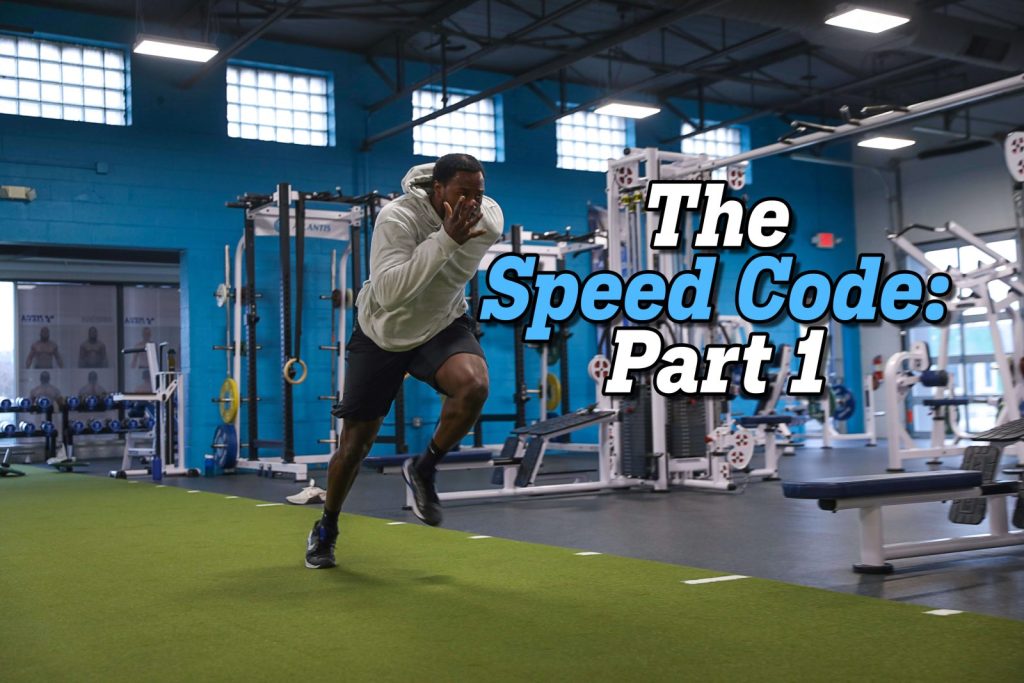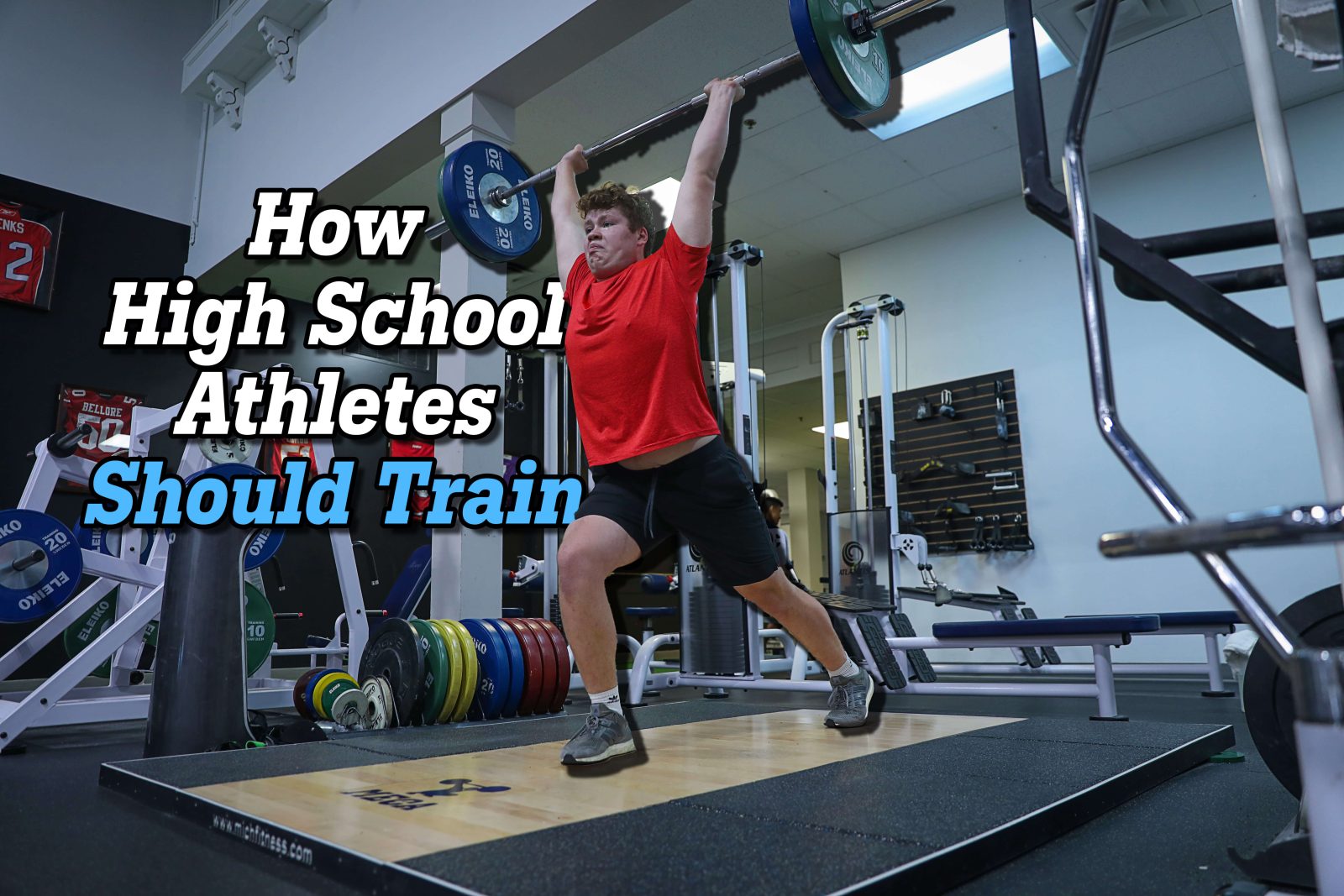Building Sport Specific Speed – that unlocks athletic ability
It was the winter of 2012, and I was sitting outside DTW metro airport waiting for my mentor to get off a flight. He had texted me the night before. “Dave, I’m going to be in Detroit for a few hours. Would you like a consult?” Yes! I said…… “ok meet me outside the airport, bring cash!” My mentor, Charles Poliquin, who many consider the greatest strength coach of all time, had an incredible track record history of producing results with the world’s best athletes. His resume of athletes he coached included over 700 Olympians, 70 medalist, and multiple world record holders in 18 different sports. The conversation we had opened my mind to what was possible for developing speed for athletes regardless of the sport. In this series, I am going to share what he taught me in that conversation along with what I have learned coaching more than 1,000 athletes myself.

Big Idea 1 from Charles:
You can dramatically increase speed up to about 30 yards through training. After that, genetics that are already set in or are much more difficult to train play a greater role, like femur length, fiber type, tendon/ligament composition and make up. You can make any athlete top 1% in speed up to about 30 yards. This was a huge paradigm shift because I knew you could improve speed, but I didn’t realize to that extent and at what distance did it really matter. In most team sports, speed is really about acceleration. The distance and duration just depend on the sport. When most athletes and coaches think about speed, the majority of the focus tends to top end or max velocity. That is really misses the boat on what is important and furthermore what is even trainable.
My Practical Experience:
I have found this to be true with an athlete who has a decent level of ability. You can get just about any athlete to be top 1% in speed for their sport or position at their given level of play. There are 2 factors that dictate this. Time and proper individualized personal training. Most people think of speed, and they look to Olympic Sprinters and their training to unlock the key to running faster, while strength training and time spent in the weight room are secondary to sprint work. This idea really hurts the athletic development of team sport athletes who primarily accelerate, decelerate, and change direction. Here’s why. Those athletes are already doing those fast-sprinting movements while they play their sport. They are already accessing and training that physical quality in practice and competition. The physical or athletic quality that they need isn’t more sprinting – its strength! Along with joint integrity, and muscular flexibility.
When I look at trying to improve someone’s speed, I ask myself what are the exercises that are going to have the greatest “training transfer?” What are the exercises that we are going to do in the gym that are going to improve the athletes’ physical abilities that will make them faster on the court or field of play. The first thing we focus on is structural balance or what we call Specific Performance Ratios (SPRs). These are strength ratios that athletes need to lift using isolation movements that show us physical discrepancies. This is training the individual muscles to be strong and improve strength in the joint. This creates the biggest potential for speed because when structural balance is achieved, the risk of injury is reduced, and the brain feels safe to turn on all the muscles in the right sequence to reach its maximum potential. This is best achieved through an individualized strength training program that addresses the individual weaknesses and limitations of the athlete.
Real World Results:
Cam Ryan, 17-year-old running back from Detroit Catholic Central ran a 5.0 40-yard dash time his junior year. That season he rushed for 950 yards with his longest run being 29 yards for the season. He didn’t have breakaway speed. I trained Cam for 6 months in the off season where all his training centered around strength and power development in the weight room. His senior year he improved his 40-yard dash time to 4.70 and ran for over 2,300 yards and 32 touchdowns. He had 7 runs for over 70 yards. He now had breakaway speed due to a personalized strength training program for him. The bonus is that he took his team all the way to the state semifinals and because of his performance, he was offered a division 1 scholarship in college.

Take Away Points:
- Speed is very improvable and with the right training and enough time, it’s possible to reach the top 1%.
- Speed is specific to the sport or event (more on this in part 2) this is where sport specific training really matters and can make a massive difference in outcomes.
- For team sport athletes prioritizing strength training can have the greatest effect on training transfer. The right training will allow the athlete to realize new physical abilities in sport.
- Individualizing the training process, isolating weak points in the athlete’s systems, and improving structural balance/joint integrity have the greatest potential for improving speed due to decreasing neural inhibition.
- Final point and most important – building confidence and having the belief that you can dramatically improve your speed if you engage in the right training is paramount in developing. Before you physically achieve, you have to be forward thinking and have the belief that you can improve and get better.
Part 2: Sport Specific Speed Training – What to Do


Email David at david.mecastrong@gmail.com
P.S. If you know an athlete or a parent of an athlete who you think could benefit from
this article please feel free to forward it to them and share it!
P.S.S If you want to book an Assessment link here – contact form













